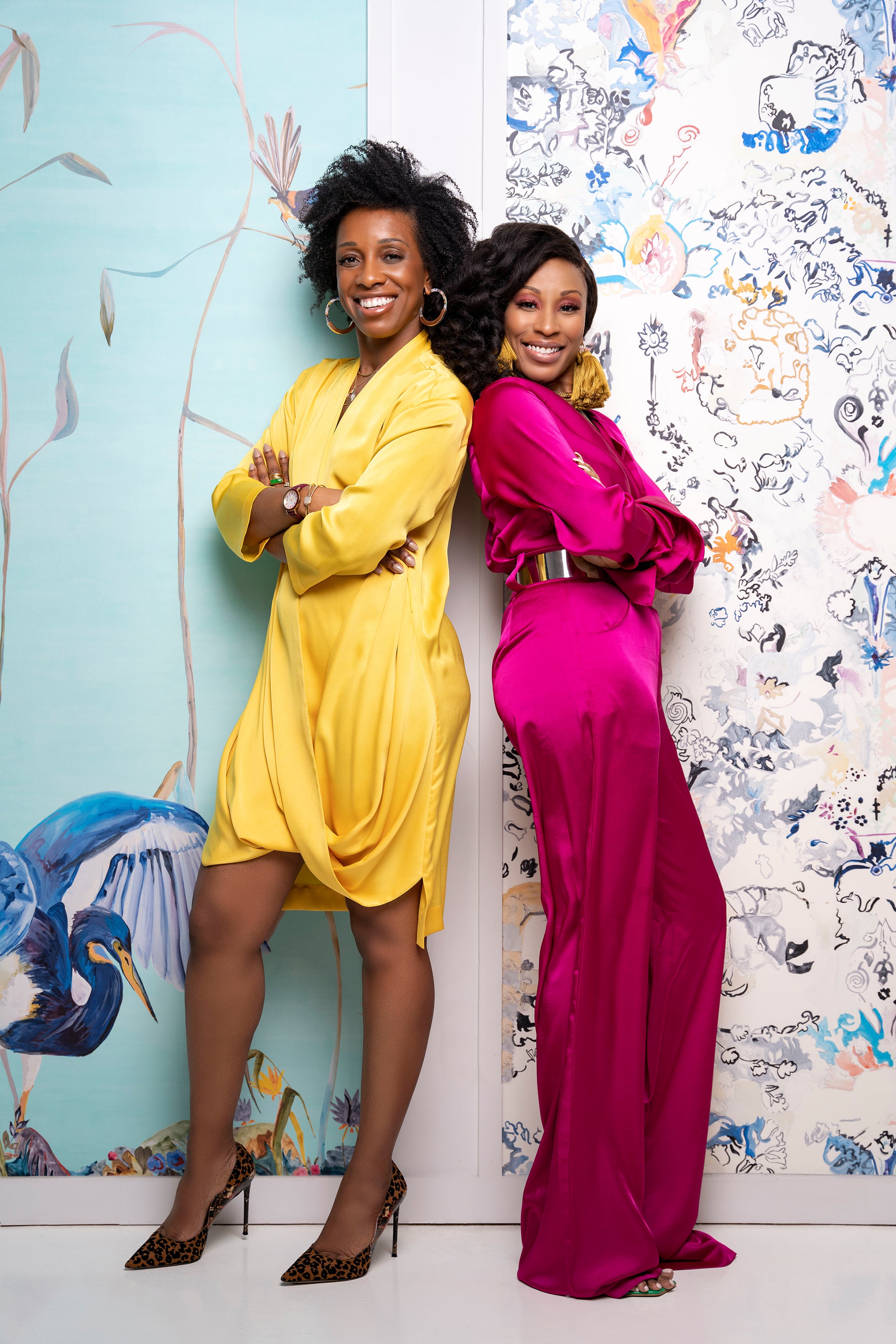The Black Interior Designers Network started as a celebration. The first big change to the organization came with a tragedy. Founded in 2011 by designer Kimberly Ward, the group grew from a list that Ward had compiled, highlighting the work of 20 talented Black designers. From there, it became much more—a network that provided community, mentorship, resources and advocacy for Black designers in an industry that has historically overlooked their work. Then, in 2017, Ward passed away of cancer, and designer Keia McSwain took the mantle of leadership.
“It’s a daunting time for me to think back on, considering all the things that [Ward] must have been going through and still prioritizing this organization,” McSwain tells host Dennis Scully on the latest episode of The Business of Home Podcast. “We had a few conversations and some of them I left teary-eyed, some of them I left smiling, some of them I left really upset. But I think the gist of what I think she was trying to instill in even those who have not become members yet is that the industry has no say over who you are, how good you are, what you can produce, what you will be. It is our job and our duty to be there for the future.”
The most recent chapter of BIDN’s history has been marked by another tragedy—the murder of George Floyd, an event that sparked a racial reckoning in all corners of American society, including the design industry. In this episode of the podcast, McSwain and the BIDN’s new chief development officer, Kia Weatherspoon, discuss what has—and hasn’t—changed since last summer.
“People want to hear that change happened last year—people want a positive outcome, they want a happy ending. I think it would be dishonest of us to paint this picture [that] since last summer, so much has changed, and it really hasn’t,” says Weatherspoon. “The backlash might be: ‘They sound ungrateful.’ Like, how dare we acknowledge it for what it really is a year later? I think it might go over some people’s head how [racial inequity in American society at large] directly correlates back to our industry, but it’s systematic and it’s systemic, and we deal with it in the interior design space.”
It’s a raw, very real conversation about the snail’s pace of progress in an industry that’s famously slow to change.
Listen to the show and check out a few takeaways below. If you like what you hear, subscribe on Apple Podcasts or Spotify. This episode is sponsored by Atlanta Market and The House of Rohl.
MICROAGGRESSIONS
Racism in the design industry, say McSwain and Weatherspoon, often takes the form of a double standard. When a brand has a minimum buy-in, for example, reps will often bend the rules and allow designers to purchase below that level in certain instances. For Black designers, says McSwain, companies start sticking to rules more stringently—or throwing up additional barriers to opening an account. “It’s a question. It’s, ‘How much do you spend, how did you hear about us, where did you find us? Are you actually gonna buy from us?’ Do you ask everybody that?” says McSwain. “Those [are the] microaggressions we deal with. You’re not asking Rebecca if Rebecca’s going to purchase wallpaper if [she] reaches out for memos. No. But you hear the Blackness in my voice and you don’t expect that I’m going to shop.”
ISSUE FATIGUE
In the wake of Floyd’s murder last summer, there was a rush of attention and a surge in donations to the BIDN. That in itself was complicated—McSwain says the outreach was overwhelming and often misguided: “We felt this massive overhaul of people reaching out: How can we help? We don’t know. You tell us what it is you want to do. We can’t share with you how to change your life, how to want to be better.” Now, she notes that fatigue around the issue of racial equity in the design industry has settled in.
“It’s not light work. If the industry understood what it is to want to put in work without getting something back, I think they would truly understand what we’re asking for as an organization,” she says. “This industry is wrangled up in making a dollar. I’m sure that there are designers out there who are like, ‘This Black issue? This is slowing me down.’ It’s because their mind is not on equity, on selflessness, and what America has told us that America should be like. It is: ‘I gotta eat, fuck y’all, figure it out, and when do you think we’ll be able to get this done?’”
MEDIA MATTERS
Last year, the BIDN debuted The Iconic Home, a digital showhouse in partnership with Architectural Digest. That partnership is ongoing, but Weatherspoon and McSwain still see ample room for progress in design world publications covering Black designers. “They are the bible of what interior designers should read, so if they’re pushing this Eurocentric blueprint, then people will feel as though this is what their work needs to look like,” says McSwain. “There’s always a ladder to climb—in terms of equity, we’re so far behind. You could partner with us and us solely for the next 10 years to do a showhouse and it still will not have placed us where we need to be in terms of visibility within the industry.”
Homepage image: Kia Weatherspoon (left) and Keia McSwain | Rayon Richards




























